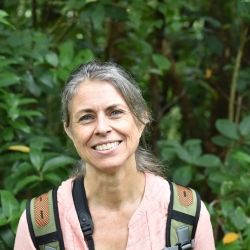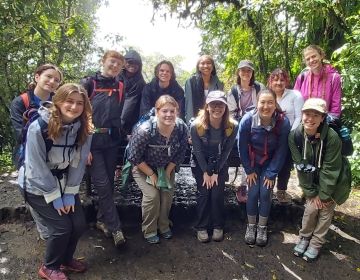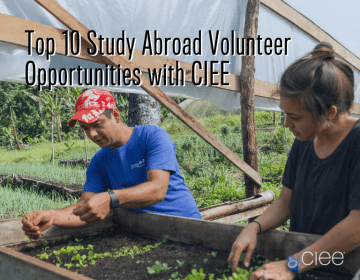Internships in Sustainability and the Environment: "Integrating Environmental and Financial Sustainability on a Climate-Smart Tropical Farm," Scott Vondy
During my time as an intern at Finca Samanea, I not only explored an issue of sustainability, but earned a deeper understanding of the history, values, and dreams of the people in the Monteverde region. My assignment was to develop a pasture-raised egg production system that would adhere to the tenets of “Climate-Smart Agriculture”. To be successful at this task, I thought of the old adage, “Farm by looking at the land and not by reading an instruction manual”. For me to come enter the farm with preconceived notions of how a chicken operation should run would be socio-centric and would not result in a successful project. Instead, with the help of my internship advisors Fabricio Camacho and Karen Gordon, we engaged in a cross-cultural exchange of ideas by interviewing local farmers as well as the regional authority on the matter, the Ministry of Agriculture.
Farming by looking at the land
This project naturally fit my educational interests involving agro-ecological issues. Finca Samanea’s location in a biological corridor makes the integrity of the land a priority for the overall ecosystem. However, conservation for conservation’s sake does not always support the social and economic legs of the sustainability stool. If we are to be successful in easing the tensions between agriculture and nature, we must study and understand the attitudes of the public and the public’s connection with the environment. I am very thankful to have had the opportunity to work toward developing a system of agriculture that emphasizes harmony with nature rather than domination over it. Throughout this experience, I have learned methods of land management and development techniques, how to develop plan specificities to meet the wishes of a small family farm, and new interview techniques.
The products of my internship will provide the family with a working plan to feed and house 40 chickens in an organic, pastured system. It may also serve as a model for other local farmers who have asked me to share my results with them. I am extremely thankful for CIEE-SE providing this opportunity as well as to Fabrisico and Karen for being kind enough to invite a student to their beautiful farm and to include them in their personal decision making process for the direction of their farm.
Related Posts
Happy Earth Day: Today and Every Day
Happy Earth Day! Every April 22, this global event comes around to remind us how precious our planet is, what sustainable efforts we can make to protect Earth, and that... keep reading
Top 10 Study Abroad Volunteer Opportunities with CIEE
Have you ever wondered if you could volunteer abroad? Perhaps you're looking into study abroad programs that provide international volunteer opportunities. If you’re itching to study abroad and truly make... keep reading
Recycling Internship with ADI San Luis
Written by Maya Peske (Cornell College), Internship in Sustainability and the Environment The road from San Luis up to Monteverde is well known by all of the people in the... keep reading



